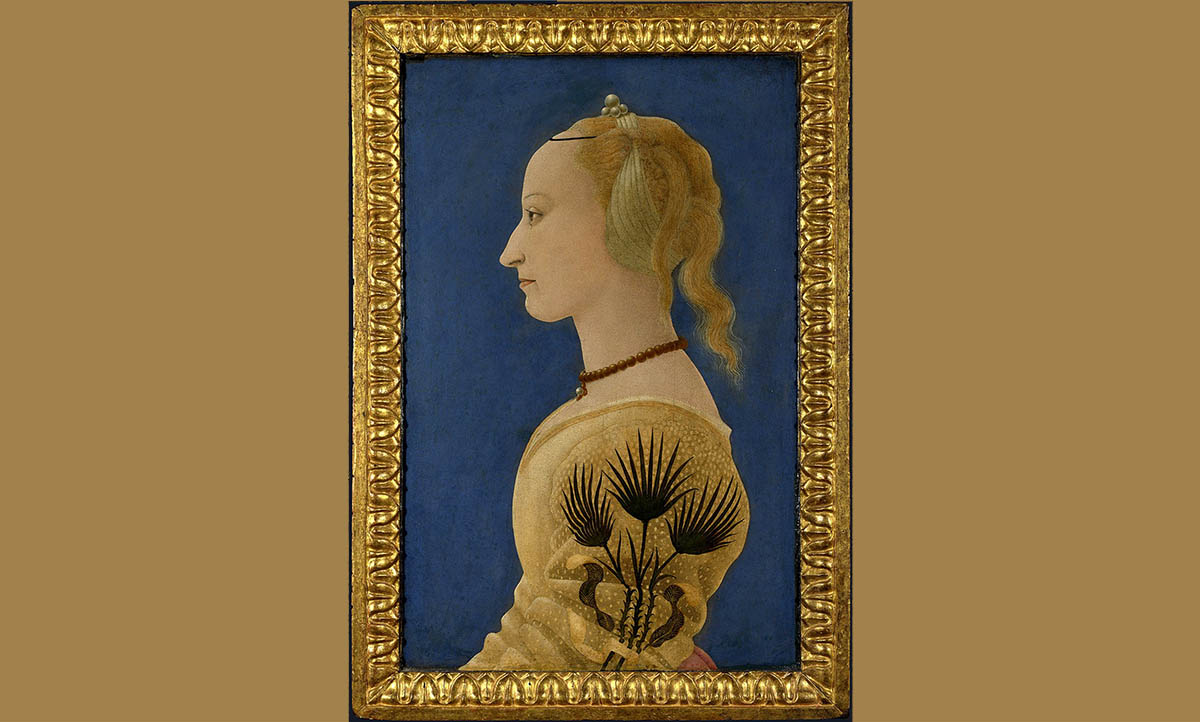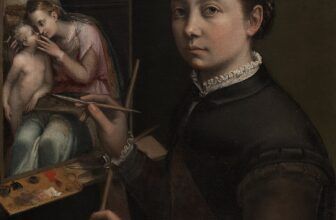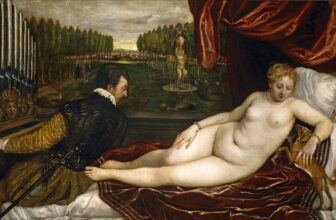
The Portrait of a Lady in Yellow: Meaning and Symbolism
Among the treasure-trove of Renaissance art that survives to this day, few works are as quietly enigmatic yet profoundly captivating as Portrait of a Lady in Yellow, painted by the Florentine master Alesso Baldovinetti in the mid-15th century. At first glance, the painting might appear deceptively simple: a young woman, posed in strict profile, clothed in rich yellow attire, her expression detached and serene. Yet within this simplicity lies extraordinary complexity. The portrait represents not only a pinnacle of Baldovinetti’s skill but also the merging of Renaissance ideals of beauty, social identity, symbolism, and personal narrative.
This story will explore the history, context, meaning, and symbolism of Portrait of a Lady in Yellow, revealing why this understated image continues to fascinate art historians, museum-goers, and admirers centuries after its creation.
Who Was Alesso Baldovinetti?
To understand Portrait of a Lady in Yellow, it is important first to understand its creator. Alesso Baldovinetti (1425–1499) was a Florentine painter and mosaicist associated with the early Renaissance. Although not as universally known as giants like Botticelli or Fra Angelico, Baldovinetti was nonetheless highly respected in his time for his precision, technical mastery, and delicate sensitivity to color and line.
Born into a wealthy family, Baldovinetti trained in the vibrant artistic climate of Florence during a period of tremendous innovation. The early Renaissance was marked by a new interest in naturalism, perspective, and the human form. Artists sought to balance the spiritual traditions of medieval art with the human-centered ideals emerging from classical antiquity. Baldovinetti’s works reflect this spirit: careful observation of detail, balanced with idealized beauty and symbolic layering.
He was especially known for his work in fresco and mosaic, as well as for his portraits. Portrait of a Lady in Yellow is considered one of his finest surviving works in the genre, embodying his distinctive ability to fuse decorative elegance with lifelike realism.
How the Painting Was Made
Portrait of a Lady in Yellow was created around 1465, during Florence’s flourishing Renaissance period. Like many portraits of the time, it was painted in tempera on panel, a common medium before the widespread adoption of oil paints in Italy. Tempera, made by mixing pigment with egg yolk, gave the work its crisp, luminous surface and allowed Baldovinetti to capture exquisite detail in costume and ornamentation.
The portrait follows the strict profile view, a convention deeply rooted in early Renaissance portraiture. This approach was influenced by ancient Roman coins and medallions, where rulers were depicted in side profile to emphasize authority, clarity, and nobility. The profile view in Baldovinetti’s painting also strips away emotional distraction, presenting the sitter as an emblem of idealized beauty and virtue rather than as an individualized psychological study.
The lady’s figure is shown against a plain blue background, her features sharply outlined, her hair elaborately styled and adorned with pearls and ribbons. Her dress is rendered with meticulous attention to fabric texture and ornament, emphasizing both her wealth and the symbolic language embedded in clothing.
Who Is the Lady?
The identity of the sitter remains a matter of debate among historians. She is widely believed to be Francesca degli Stati, a noblewoman from a prominent Florentine family. The ornate costume, jewelry, and heraldic symbols woven into the dress point toward her social status and family identity. Portraits at the time were rarely painted for their own sake; instead, they were often commissioned to commemorate betrothals, marriages, or important familial alliances.
Thus, Portrait of a Lady in Yellow likely functioned as more than a personal likeness: it was a declaration of lineage, wealth, and the virtue of the woman represented. By capturing her image in such a stylized and symbolic way, Baldovinetti provided the family with a lasting testament to their status in Florentine society.
What the Portrait Represents
At its heart, the portrait is about more than the likeness of one woman. It embodies Renaissance ideals of feminine beauty, virtue, and social identity.
The lady’s serene expression, elongated neck, pale skin, and refined features reflect the Renaissance concept of la donna angelicata, the “angelic woman” who embodied moral and aesthetic perfection. Her strict profile emphasizes her dignity and modesty, qualities prized in women of her status.
The plain blue background isolates her from any worldly setting, elevating her as an ideal figure rather than a person in a specific place. She becomes almost timeless, removed from daily reality and elevated into an emblem of virtue.
At the same time, her richly adorned dress and hairstyle speak to the worldly function of the portrait: to assert the wealth and prominence of her family. Portraiture was as much about social signaling as it was about recording likeness.
Symbolism and Meaning
Every element of Portrait of a Lady in Yellow carries symbolic weight. The Renaissance viewer would have understood these codes immediately. Today, by unpacking them, we can glimpse the deeper layers of meaning in the painting.
1. The Yellow Dress
Yellow, in the Renaissance, carried complex associations. It could symbolize warmth, wealth, and divine light. In the context of marriage portraits, yellow was often connected to fertility and happiness, suggesting the woman’s role as a bringer of prosperity to her family. The rich, golden hue in Baldovinetti’s portrait emphasizes not only beauty but also status, for such dyes were expensive and reserved for the elite.
2. The Elaborate Hairstyle and Pearls
Her hair is styled in an intricate pattern and adorned with pearls and ribbons. Pearls symbolized purity, chastity, and virtue, qualities expected of noblewomen. The elaborate coiffure signals wealth, but it also highlights the woman’s moral and social role as a wife who upholds the honor of her family.
3. The Profile View
By choosing the strict profile, Baldovinetti aligns the sitter with the idealized, almost numismatic representations of rulers on coins. It suggests permanence, dignity, and moral uprightness. It also removes psychological individuality, allowing the sitter to stand for a larger ideal of noble femininity.
4. Heraldic Patterns
Subtle patterns woven into the dress have been linked to the heraldry of Florentine families, particularly the Stati. These symbols served as visual confirmation of lineage and alliance, making the painting not only a personal portrait but a public declaration of identity.
The Type of Art
Portrait of a Lady in Yellow belongs to the tradition of Renaissance portraiture, specifically the Florentine school of the 15th century. It is characterized by:
Tempera on panel technique, producing bright, durable colors.
Profile composition, rooted in classical prototypes.
Idealization of features, blending realism with symbolic representation.
Decorative emphasis on costume and ornamentation.
This kind of portrait was not simply art for art’s sake. It was functional, designed to convey social, familial, and moral messages. It straddles the line between personal likeness and symbolic icon, making it both a piece of fine art and a social document.
The Portrait of a Lady in Yellow Legacy and Influence
Although Alesso Baldovinetti was not as famous as some of his contemporaries, Portrait of a Lady in Yellow has remained one of the most recognizable and admired images of early Renaissance portraiture. Its clarity, elegance, and restraint influenced the development of portraiture in Florence and beyond.
Later artists such as Domenico Ghirlandaio and Sandro Botticelli expanded on this tradition, creating more psychologically expressive portraits. Yet Baldovinetti’s painting represents a crucial stage: the balance between medieval symbolic tradition and Renaissance humanism.
Where Is the Painting Today?
Today, Portrait of a Lady in Yellow is housed in the National Gallery, London, one of the most prestigious art museums in the world. It entered the collection in the 19th century and has since become a beloved highlight of the museum’s Renaissance galleries.
Visitors to the National Gallery often find themselves drawn to the painting’s quiet intensity. Despite its small size and apparent simplicity, the portrait has an almost magnetic power. It speaks across centuries, inviting us to reflect not only on the woman it represents but also on the ideals, values, and aspirations of an entire age.
Alesso Baldovinetti’s Portrait of a Lady in Yellow is far more than a depiction of a single sitter. It is a carefully constructed symbol of beauty, virtue, status, and lineage, rendered with exquisite precision and subtlety. Through its symbolism, the yellow dress, pearls, heraldic motifs, and profile view, it conveys Renaissance ideals of womanhood and the social function of portraiture.
At the same time, the painting captures something timeless: the human desire to preserve memory, to express identity, and to project meaning through art. For Baldovinetti, this portrait was both a technical achievement and a cultural statement, embedding a woman’s image into the visual language of Renaissance Florence.
Today, hanging in the National Gallery in London, it continues to fascinate modern audiences. Its mystery lies not only in the sitter’s identity but in its enduring ability to embody the delicate balance between individual presence and universal ideal. Portrait of a Lady in Yellow remains one of the quiet yet luminous jewels of Renaissance art, a painting that rewards patient looking and thoughtful interpretation, as relevant now as it was five hundred years ago.




